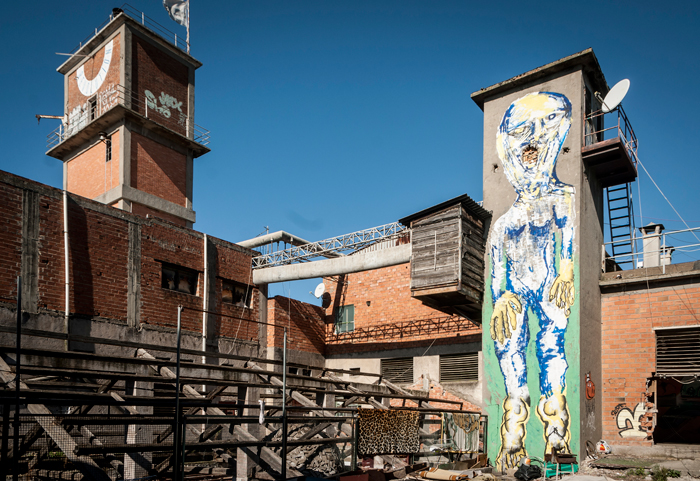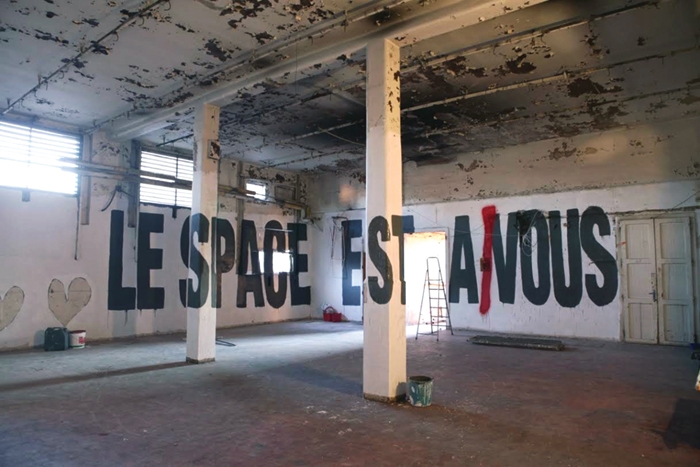With Brexit having dominated the political landscape in the UK for over two years, President Trump in his second year of office, and the anti-immigration Five Star-League coalition governing Italy since May, rightwing populism has established itself as a legitimate, if not credible, political force. The success of populist politicians has come about as they aim, at least superficially, to represent the will of the working classes. In the artworld we see this tendency towards horizontalism mirrored in attempts at inclusivity embodied by open-selection processes for artists and employees. In modern times, such efforts can be traced back to the Salon des Refusés, a largescale exhibition held in Paris in 1863, displaying works by artists – among them Gustave Courbet, Édouard Manet and Paul Cézanne – who had been refused entry to the Paris Salon on the grounds of quality, an annual exhibition selected by members of the Academy of Fine Art, which was famously out of touch with emerging trends.
The refusenik show – as Émile Zola vividly conveys in his novel L’Oeuvre (The Masterpiece, 1886) – represented rather more than a simple challenge to the cultural order as embodied by the Academy, with its preference for staid history painting and academic portraiture. As Zola stated, ‘Here one found the smell of battle, of cheerful battle, given jauntily at daybreak, when the bugle sounds, and when one marches to meet the enemy with the certainty of beating him before sunset.’ The ‘battle’ the novelist describes was not fought merely over representation or stylistic preferences – though these factors were instrumental – but continued the perpetual work of social levelling in a land that had little over 70 years prior to the Salon des Refusés seen its ruling elite (and a higher number but lesser total proportion of working class ‘antirevolutionaries’) butchered during the revolutionary Terror. That historical episode, responsible for the death of between 17,000 and 40,000 people by guillotine, firing squad, drowning or poor prison conditions, took a number of artists, poets, academics and workers from all backgrounds.
Today, political and artistic tendencies towards democratic expression clearly still exist parallel to one another, as could be seen, for example, in last year’s #MeToo and #NotSurprised campaigns that aimed at drawing attention to sexual harassment of women working in the media and arts. Such movements, which emphasise the importance of pluralism rather than populism, demonstrate the lengths we need to go to assure the inclusion and care of people from all backgrounds in the arts over 150 years after the Salon de Refusés.

In Rome, the latest incarnation of the MACRO (the Municipal Museum for Contemporary Art) aims to take artistic inclusion to its extreme, continuing a battle for social inclusion. The museum relaunched on 30 September as the ‘Macro Asilo’, with Giorgio de Finis as its newly appointed director. De Finis, who since 2011 has been director of MAAM (Museo dell’Altro e dell’Altrove, or the Museum of the Other and the Elsewhere), a large occupied former slaughterhouse on Rome’s periphery, has pledged to bring his ‘anything goes’ curatorial policy to the venue, with an open selection policy, meaning anyone can exhibit, perform, screen, present or otherwise express themselves in the museum space, alongside programmed shows of recognised artists, for the duration of the experiment, which will end on 31 December 2019.
His project finds itself peculiarly bound up with the current political situation, as de Finis was selected by the city of Rome’s minister of culture, Luca Bergamo, himself appointed by Virginia Raggi. Raggi, Rome’s first female mayor, ran for the Five Star Movement, which forms one half of the ruling coalition government. That government has been known for, among other things, closing ports to migrant ships, such as in June when it refused – illegally – to let the NGO ship Aquarius’s 629 migrant passengers, who were rescued from the Mediterranean as they tried to reach Italy from Africa, disembark. De Finis’s MAAM, by contrast, is perhaps best known for housing a number of immigrants on its premises, who regularly participated in and contributed to the MAAM’s programme, which has included projects by Simone Bertugno, Mauro Cuppone, Gian Maria Tosatti, Alice Pasquini, Michelangelo Pistoletto and Sten&Lex, among others. It is early days for the revamped MACRO, though indications demonstrate that the open policy has been a success with visitors: 6,000 people attended Macro Asilo’s inaugural night on 30 September. Its success will depend on how deftly de Finis manages to balance the forces of political populism at the municipal and national level with the need for pluralism in the arts. This would be best demonstrated by an adequate inclusion and fair treatment of women and minority groups within Italy’s art scene, and a promotion of minority rights within wider society.
From the December 2018 issue of ArtReview
